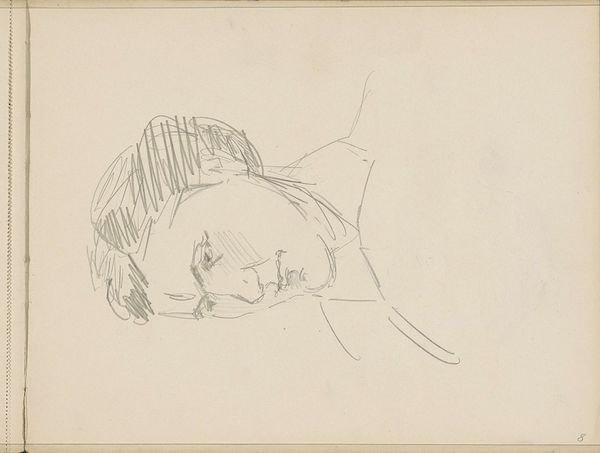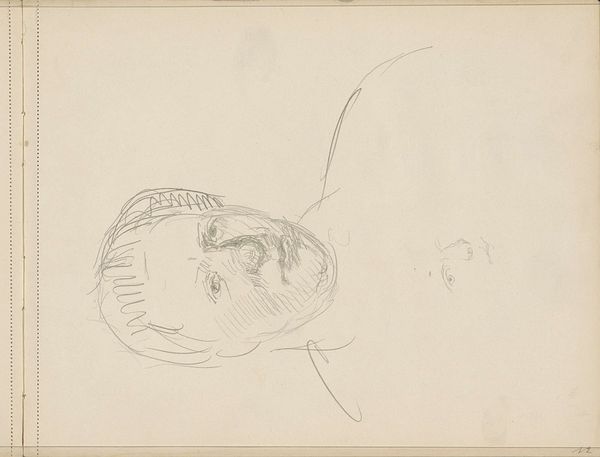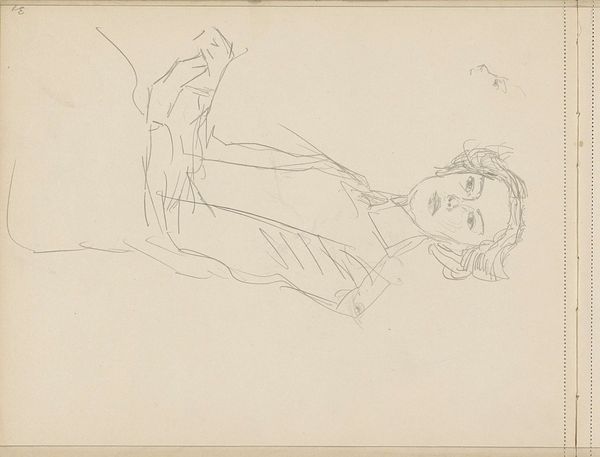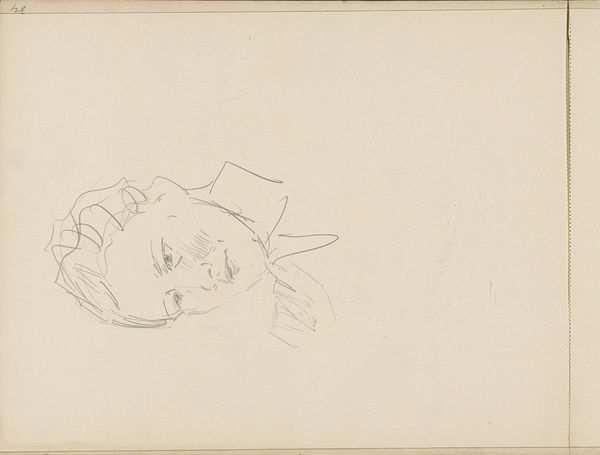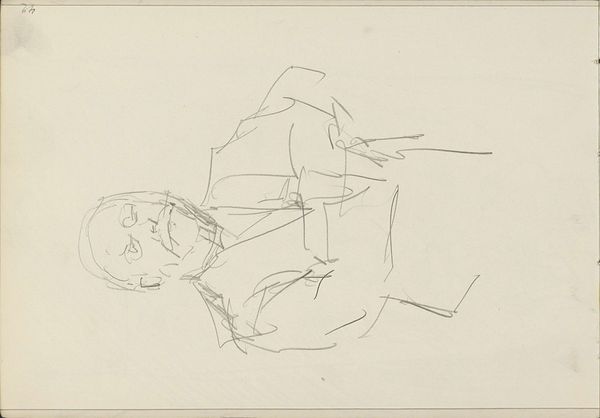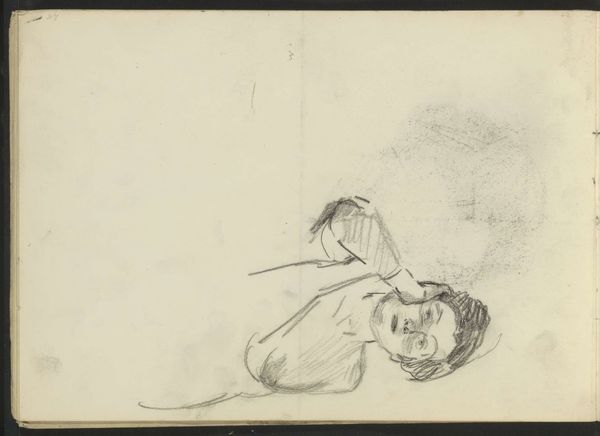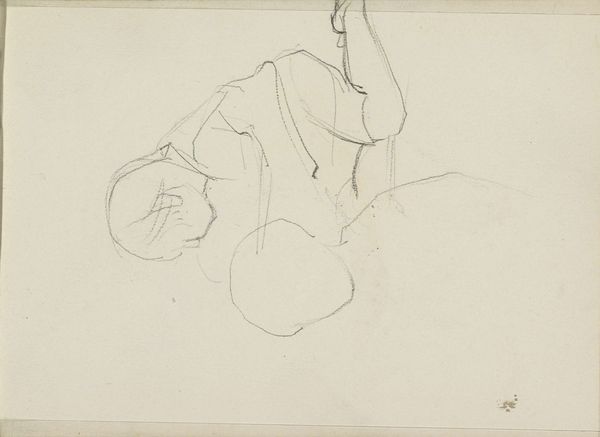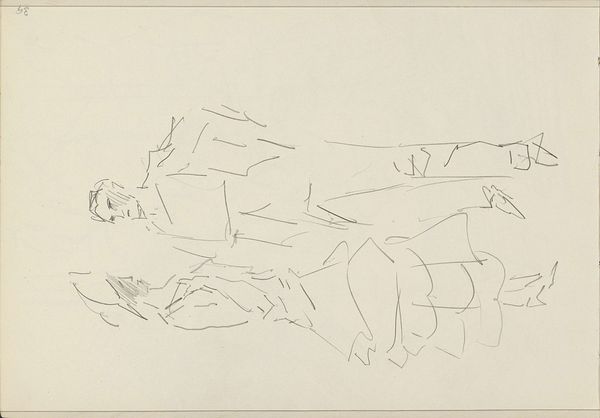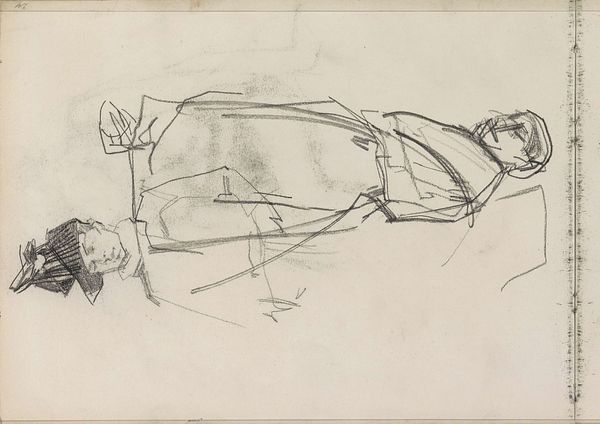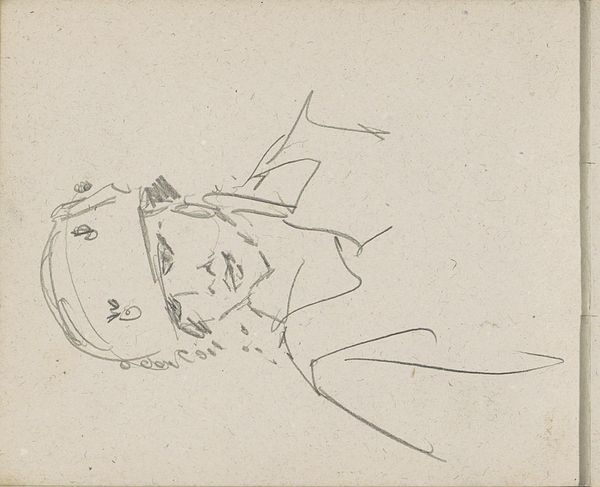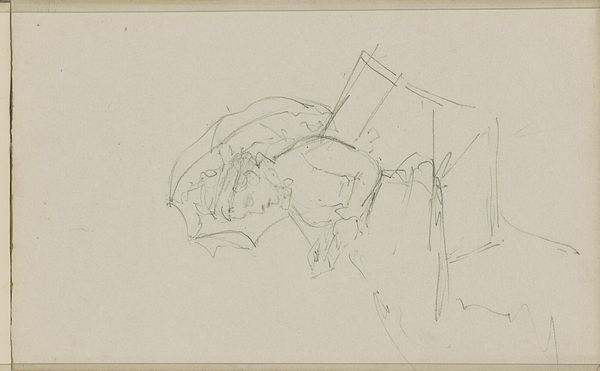
Copyright: Rijks Museum: Open Domain
Editor: Here we have Isaac Israels' pencil drawing, "Vrouw met haar armen over elkaar," placing its creation somewhere between 1875 and 1934. It strikes me as a rather vulnerable pose, almost melancholic. What do you see in this piece? Curator: I see a challenge to the male gaze. While Israels was undoubtedly a man of his time, focusing on the portrayal of women in domestic spaces, this sketch offers a compelling point for deconstruction. The woman’s arms are crossed, creating a barrier. Is it a physical gesture of defensiveness? What social pressures might this woman have faced? Editor: So, you're seeing her pose as a form of resistance, a statement perhaps, rather than mere resignation? Curator: Precisely! Consider the period. Women’s roles were incredibly restricted. By presenting her with this agency, albeit subtle, Israels is prompting a dialogue. What societal expectations is she pushing against simply by existing in this space, in this way? And what power dynamic exists between artist and subject? Editor: That's fascinating! I hadn't considered the active role of the subject herself in the composition. Curator: Furthermore, consider the rapid, unfinished lines. It is as though the image cannot be contained, or fixed. In what ways might this aesthetic rebellion against perfect form reflect a larger dissatisfaction with prescribed roles? Editor: That opens up so many more ways to view it. The roughness was just something I thought was unfinished but understanding the context… Curator: It allows us to think critically about gender, representation, and artistic intention. It allows for an opening up, instead of closing down! Editor: Thanks, that really shifts my perspective! It’s incredible how historical context changes how we perceive art. Curator: Indeed! And remembering that art isn't created in a vacuum encourages us to constantly question, challenge, and engage in meaningful discourse.
Comments
No comments
Be the first to comment and join the conversation on the ultimate creative platform.
